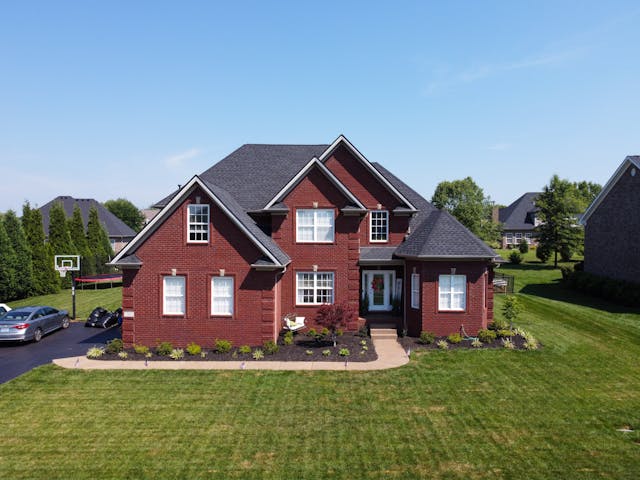This is a sponsored guest post.
The long-standing argument between urban and suburban real estate investing is still very much relevant today. Both have their own special attractions and financial possibilities, but which is better for you? We’ll examine the benefits and drawbacks of investing in cities and suburbs in this post to assist you in making your investment decision.
Understanding Urban Investments
Investors have long been drawn to urban regions because of their busy streets and tall skyscrapers. Cities have a special set of opportunities and difficulties that may have a big effect on your investment. Cities are frequently centers of economic activity, drawing a constant flow of renters, thus being close to job centers is a big lure.
Another benefit is higher rental yields since urban homes can get higher rents because of their location. The allure of city living is further increased by cultural and social attractions like theaters, museums, and dining options. Urban regions usually have strong public transit systems, which facilitate commuting and raise the value of urban real estate. However, it’s crucial to navigate the urban real estate market wisely, which is why many investors choose top realtors in Denham Springs, LA to guide them through the process. In the ever-changing urban market, investors can optimize their profits and reduce possible risks by utilizing local knowledge.
Understanding Suburban Investments
Compared to urban locations, suburban communities—which are renowned for their big homes and peaceful neighborhoods—offer a distinct type of investment opportunity. The affordability of suburban investments is one of its main draws; buying and maintaining a property in the suburbs is typically less expensive. As a result, a wider spectrum of investors can access them.
Additionally, living expenses are lower in the suburbs, which can be especially alluring to retirees and families trying to make the most of their money. A steady tenant base is guaranteed by the family-friendly neighborhood, which offers greater space, nicer parks, and schools. Long-term tenants may also be drawn to suburban regions by the sense of safety and community they provide. Suburban investments are a good option for people looking for stability and slow growth, even though the rental yields may be lower than those of metropolitan properties due to the lower tenant turnover and consistent appreciation.
Cost Considerations
Cost concerns are a major factor in the decision-making process when evaluating investments in urban and suburban areas. Due to their exceptional locations and high demand, urban properties typically have higher purchasing prices. Due to older structures and more wear and tear, maintenance expenses for urban homes might be high in addition to the initial investment.
Conversely, suburban real estate is usually less expensive, both initially and over time. A broader spectrum of investors can invest in suburban areas due to the reduced entrance cost.
However, it’s important to note that while suburban properties may have lower rental yields, the overall expenses are also lower, which can result in a favorable net return. Furthermore, suburban real estate frequently sees less erratic market swings, giving investors a more stable financial environment.
Rental Income Potential
One important consideration when choosing between urban and suburban ventures is the potential for rental revenue. Due to their prime locations and ongoing demand from professionals and students looking for easy access to employment and educational facilities, urban residences frequently command higher rental incomes. Due to the increased demand,
landlords are able to raise rents, which could result in substantial rental returns. Urban competitiveness, however, can also lead to increased vacancy rates during recessions, which might impact the stability of overall income. On the other hand, although suburban properties could have lower rental prices than their urban equivalents, they draw long-term tenants—like families—who appreciate the additional room and sense of community. Reduced tenant turnover and more steady rental income are possible outcomes of this. Furthermore, suburban rentals frequently see lower market volatility, giving investors a more reliable and consistent source of income.
Lifestyle and Demographics
The lifestyle and demographics of suburban and urban locations are very different, which affects the kinds of buyers and tenants that each area draws. Usually teeming with activity, urban regions are home to a diverse population that includes singles, students, and young professionals. Convenience, easy access to employment, and a thriving social scene that
includes dining options, nightlife, and cultural events are frequently top priorities for many locals. For people who thrive in a dynamic setting with lots of entertainment and networking possibilities, the fast-paced metropolitan lifestyle is perfect.
On the other hand, families, pensioners, and people looking for a calmer, more laid-back lifestyle are more likely to live in suburban areas. The suburbs are perfect for raising kids because they provide roomy homes, bigger yards, and a greater sense of community. The main draws for families include top-notch parks, schools, and recreational spaces. Additionally,
retirees seeking a tranquil living environment are drawn to the slower pace and safer surroundings. Investors must be aware of these demographic variations in order to target the ideal renter base and match property attributes to prospective tenants’ lifestyle choices.
Expert Opinions
Advice from professionals in the field can be quite helpful when choosing between investing in urban and suburban real estate. Due to the high demand for rental properties in city centers, which is fueled by job possibilities and lifestyle advantages, many experts believe that urban investments can yield excellent returns. However, these investments are more expensive and risky, so understanding the market is essential. According to experts, navigating these
difficulties with the assistance of Louisiana’s top real estate agents can maximize returns and ensure well-informed judgments.
On the other hand, suburban investments are often praised for their stability and lower entry costs. Real estate professionals highlight that suburban areas provide a steady rental income stream, attracting long-term tenants such as families and retirees. Choose the best real estate agents in Louisiana who often recommend suburban properties for investors seeking gradual appreciation and lower market volatility. They emphasize that understanding local market trends and demographics is key to identifying promising suburban investments. By leveraging expert advice, investors can balance potential returns with their risk tolerance and investment goals.
Conclusion
Your personal objectives and risk tolerance will play a major role in your decision regarding urban versus suburban real estate investments. Although they come with greater prices and dangers, urban residences offer a lively lifestyle and significant potential profits. Despite being more steady and reasonably priced, suburban real estate may grow more slowly and produce lower rental returns. You may choose wisely and in line with your investment plan if you are
aware of the particular benefits and difficulties of each.

Hi there! I am Emily Evert, the owner of Emily Reviews. I am 28 and live in a small town in Michigan with my boyfriend Ryan and our two pugs. I have a large family and I adore my nieces and nephews. I love reading memoirs, and learning about child development and psychology. I love watching The Game of Thrones, Teen Mom, Sister Wives and Veep. I like listening to Jason Isbell, John Prine, and other alt-country or Americana music. I created Emily Reviews as a creative outlet to share my life and the products that I love with others.
This post currently has one response.











I enjoyed reading the latest Emily Reviews post—it made me think of how small innovations, like the “Dad Pad,” can bring comfort and real support to everyday life, just like how TURSA empowers people through meaningful employment and training services. It’s inspiring to see creativity and care at work in both personal and community-support spaces.